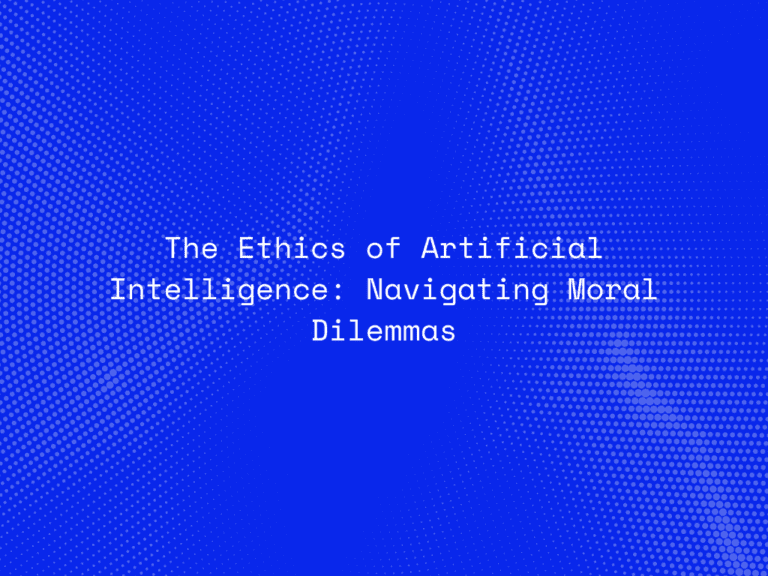Artificial intelligence is evolving rapidly, and nowhere is that evolution more evident than in the way machines now understand and generate human language. At the heart of this revolution is Natural Language Processing (NLP)—a field of AI that enables computers to comprehend, interpret, and respond to human language in a way that feels increasingly natural and intuitive.
From chatbots and virtual assistants to customer support and business intelligence, NLP is making AI interfaces more human-like, creating smarter, more seamless conversations between people and machines. In this blog, we explore how NLP is driving this transformation, the technologies behind it, and what it means for the future of AI-powered communication.
What is Natural Language Processing (NLP)?
NLP is a branch of artificial intelligence that focuses on enabling machines to read, understand, interpret, and generate human language. It involves several disciplines, including computational linguistics, machine learning, and deep learning.
By combining linguistic rules with advanced algorithms, NLP allows AI systems to:
Understand the meaning behind words and phrases
Detect context, sentiment, and intent
Translate languages
Respond appropriately in a conversational setting
Why NLP Matters for Human-AI Interaction
Human communication is nuanced. It includes not just words, but tone, context, emotion, slang, and ambiguity. Traditional software systems struggle to process this complexity.
NLP bridges the gap between structured machine language and unstructured human language, allowing AI systems to communicate in ways that are more familiar and user-friendly.
Key Benefits of NLP in AI Interfaces:
Improved User Experience: Conversations feel more natural, reducing friction in customer or user interactions.
Faster Support and Resolution: AI chatbots equipped with NLP can handle inquiries efficiently, freeing up human agents for complex issues.
Scalable Communication: NLP enables AI to engage in thousands of personalized conversations simultaneously.
Accessibility: Voice assistants powered by NLP allow hands-free access to services for users with different needs and preferences.
How NLP is Humanizing AI Interfaces
1. Understanding Context and Intent
Modern NLP models go beyond keyword recognition. Using deep learning techniques, they can:
Recognize the speaker’s intent
Detect contextual cues from earlier interactions
Differentiate between similar phrases with different meanings
For example, if a user says, “I’m cold,” a smart assistant might ask if the user wants to adjust the thermostat, not just look up the word “cold.”
2. Generating Natural Language Responses
AI systems like ChatGPT or Google Bard leverage Natural Language Generation (NLG)—a subfield of NLP—to craft human-like replies. These models:
Use grammar and sentence structure properly
Maintain conversational flow
Mimic tone and personality
This makes interactions feel less robotic and more engaging.
3. Sentiment and Emotion Analysis
Sentiment analysis allows AI to detect whether a user is frustrated, satisfied, or confused. This emotional awareness helps the system adapt its responses accordingly, creating a more empathetic and human-like interaction.
In customer service, for example, detecting dissatisfaction early can trigger escalation to a human agent.
4. Voice Recognition and Conversational AI
Voice-enabled NLP powers digital assistants like Alexa, Siri, and Google Assistant. These systems:
Understand spoken commands
Convert voice to text
Interpret user intent and respond in real time
This hands-free, natural interaction model is especially useful in smart homes, automobiles, and accessibility applications.
Real-World Applications of NLP-Powered Interfaces
Customer Support: NLP chatbots handle queries, troubleshoot issues, and offer personalized recommendations 24/7.
Healthcare: AI interfaces assist in patient triage, symptom checking, and transcription of medical notes.
Finance: NLP systems analyze financial documents, offer investment advice, and interpret customer needs.
E-Commerce: Virtual shopping assistants help users find products, track orders, and receive recommendations through conversation.
Challenges in Humanizing AI with NLP
While NLP has made significant strides, several challenges remain:
Ambiguity: Human language is often vague or context-dependent.
Bias in Data: NLP models can unintentionally learn biases present in training data.
Multilingual Complexity: Supporting diverse languages and dialects remains a hurdle.
Real-Time Understanding: Handling fast-paced, unstructured conversations can still trip up some systems.
Solving these challenges requires continuous innovation, data refinement, and improved ethical design of AI systems.
The Future of Smart Conversations
NLP is laying the groundwork for a new era of human-computer interaction—one where AI assistants, customer service bots, and enterprise tools converse as fluently as a colleague or friend. With advancements like large language models (LLMs), emotion recognition, and multilingual support, the gap between machine and human understanding is shrinking rapidly.
The future isn’t just about smart machines—it’s about humanized, intelligent conversations that feel natural, intuitive, and meaningful.
Conclusion
As AI continues to permeate our digital lives, Natural Language Processing will remain a cornerstone of intelligent, user-friendly interaction. By enabling machines to speak our language, understand our intent, and even recognize our emotions, NLP is turning AI from a cold, command-driven system into a warm, conversational partner.
For businesses and developers, investing in NLP means delivering richer, more responsive user experiences. For users, it means a future where talking to technology feels as easy—and as effective—as talking to another person.




